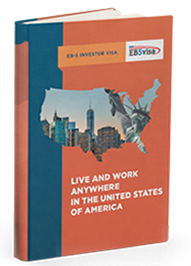Targeted Employment Area or TEA
Assigning a Targeted Employment Area to an EB-5 visa project is very important, and essential to qualify for the green card status. Unlike the designated one million American dollars amount, an EB-5 applicant can avail an option for investing half the predefined amount, provided he or she is ready to invest in a project catering to rural or economically backward area. A TEA is to be requested by the applicant in his or her I-526 petition, and the regional center has to confirm the request for the EB-5 project to proceed ahead.
What is a TEA “rural” area?
It is required for the EB-5 project to meet a set of requirements and satisfy the criteria laid down by the investor immigrant visa category. If the TEA is to be established in a rural area, it is important to know what rural area qualifies under the TEA stipulations. As per the statute, the TEA rural area should not be located near, or in, a town or a city having a population more than 20,000 residents as stated by the U.S. Census. The area cannot be an outskirt of any city or town, and it should not be a part of, or contained, in a metropolitan statistical area as designated by the U.S. Office of Management and Budget. If any geographic location or area is designated as a rural TEA area by the concerned authorities, it can be assigned to the EB-5 TEA project.
What is a TEA “high unemployment” area?
As per the EB-5 statute, the region which can be considered as a TEA high unemployment area should be experiencing a minimum unemployment rate of 150% with respect to the U.S. national unemployment average. Moreover, such an area should be located in, or be a part of a county or a metropolitan statistical location having a population of 20,000 inhabitants or more. The area should satisfy the TEA high unemployment status as specified by the governing bodies.



 English
English.png) Chinese(Simplified)
Chinese(Simplified) Italian
Italian Polish
Polish Portuguese
Portuguese Russian
Russian Spanish
Spanish




